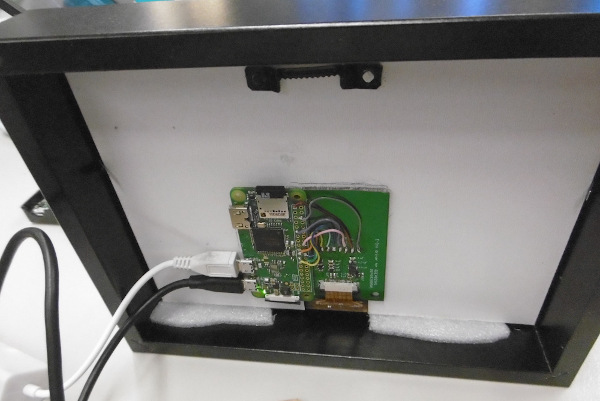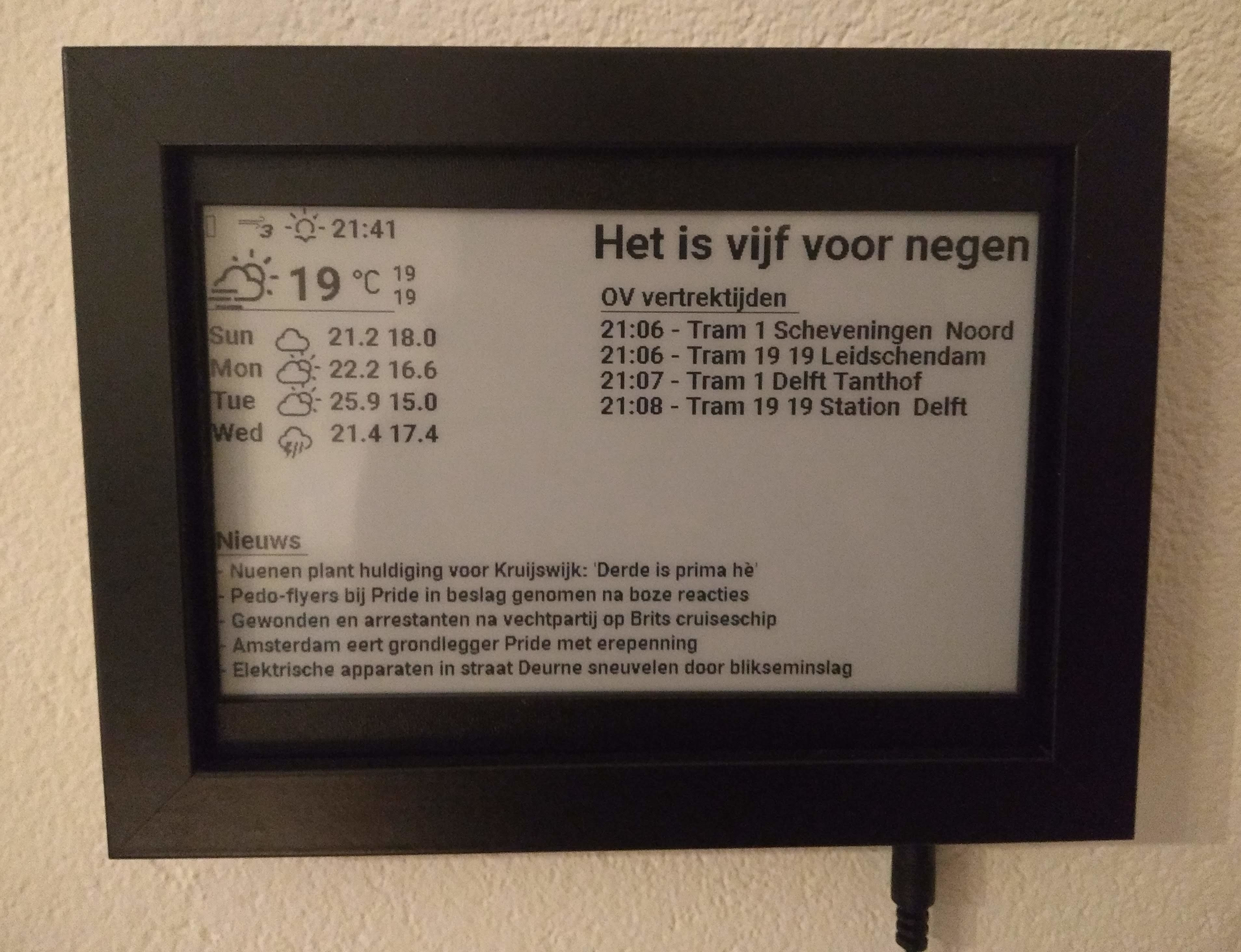E-ink home display
Posted on ma 22 juli 2019 in E-ink Raspberry Pi
I've always wanted an e-ink status display in my living room to view the weather forecast, news and public transport information. Previously I've used a SHA2017 Badge with the following app which showed a weather forecast for the following four days. So I've decided to scale up to a nice 7.5" e-ink screen which I can hang on the wall. To control the e-ink screen I've taken an Raspberry Pi Zero W since it's easier to develop with then an ESP32. To hold the e-ink screen I've gotten an Ikea RRIBBA which perfectly fits the e-ink screen and leaves enough space to fit an e-ink SPI controller and a RaspberryPi.

When I started playing around with drawing images on the e-ink screen with the official Waveshare Python driver, I noticed a blank and an image update took around 50 seconds with 100% cpu. This is too slow for a status display so I started profiling with a simple test program. The Python profiler concluded that writebytes was called for the most of the time, which is a function of the python SPIDev module. It does a write call to the SPI device for every pixel individually which was the first issue to tackle. A newer version of this driver included the 'writebytes2' function which can write a Python iterable at once, this led to a significant improvement in this commit.
Waveshare also sells e-ink panels with a third color which lead to unrequited looping since my panel is black and white. The example code first clears the panel, then generates a buffer and writes it to the device simply generating the buffer up front saved a small amount of "panel updating" time. The code to generate the buffer was also optimized.
After all these changes the panel updates with a Raspberry Pi Zero W in ~ 10 seconds and a tiny bit faster on a Raspberry Pi 3 in ~ 8 seconds. The driver code can be viewed here. Now all that was left is to write my own status page for my living room. The e-ink panel fetches my local weather, public transport and Dutch news the code which drives the display below can be read here. The final display can be viewed below, the frame hangs on a nail with a barrel jack connector for a 5V power supply.

In the future I would like to include a graph of the predicted rain for the following hour since cycling in the rain isn't always fun :-)